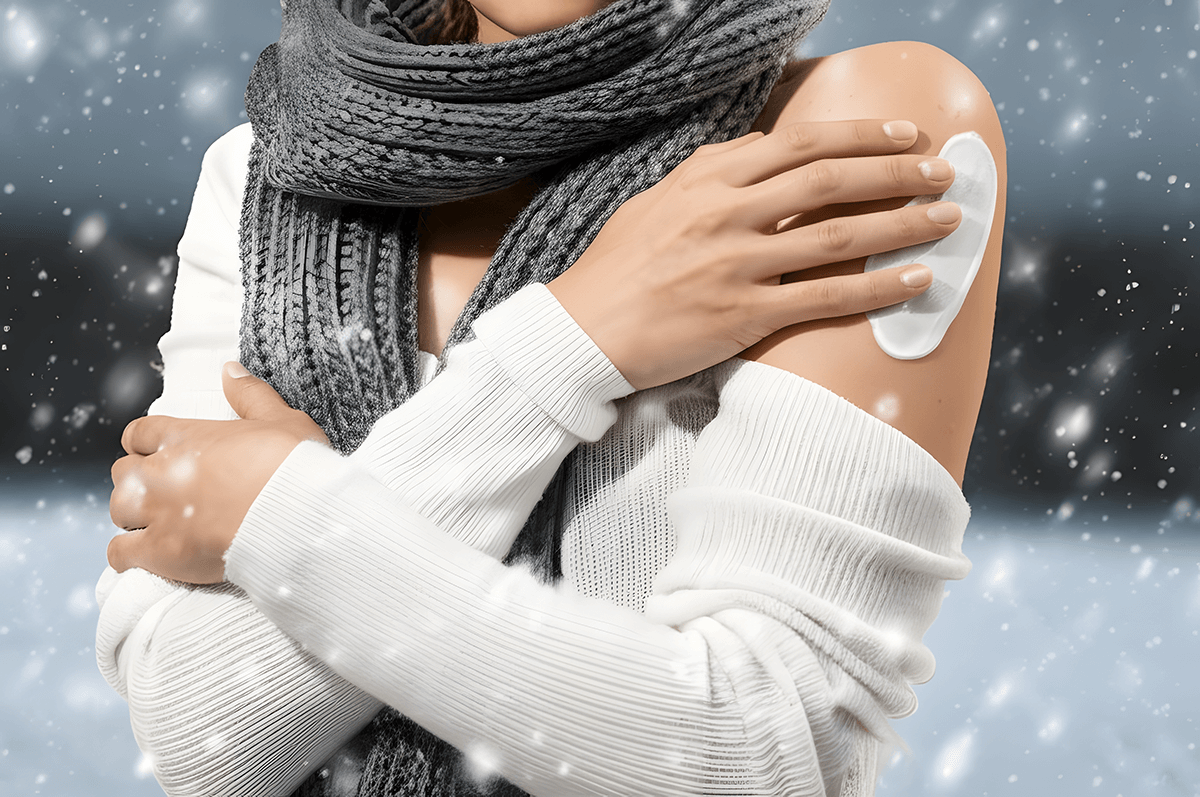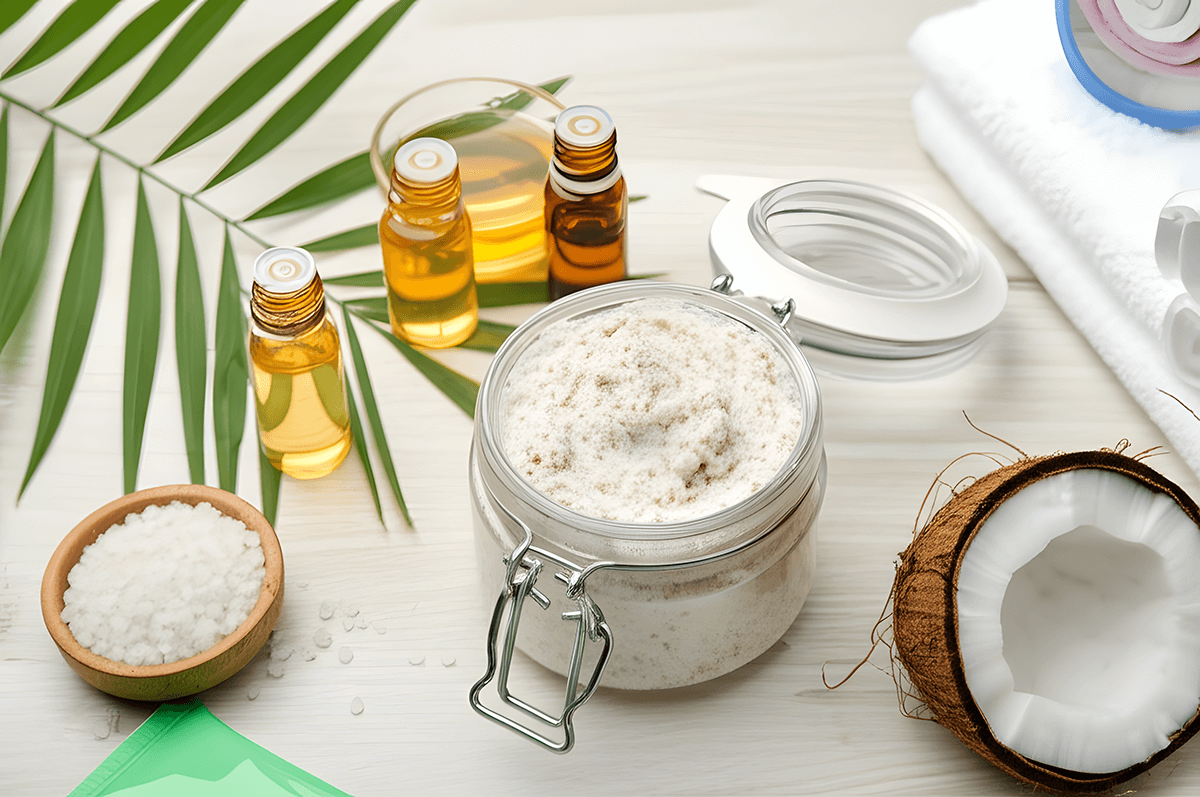When we think of sun protection, it’s easy to assume that SPF (sun protection factor) is only necessary in the summer or during sunny, beach-filled vacations. But the truth is, SPF for the body is crucial all year round—even in the winter. Whether you’re walking in the snow or sitting by a window with sunlight streaming through, the sun’s harmful UV rays can damage your skin at any time. This article will explain why you need to apply SPF during the colder months, how to avoid the dreaded sticky feeling from sunscreen, and which areas of your body are most vulnerable to UV damage. We’ll also dive into how SPF can help protect your skin from pigmentation and premature aging.
Why Do You Need SPF in Winter?
While it might seem intuitive to skip sunscreen during the colder months, experts agree that UV rays are present year-round, even when the sun is hidden behind the clouds. Here’s why SPF for the body is necessary, regardless of the season:
1. UVA and UVB Rays Don’t Take a Break
- UVA rays penetrate deeper into the skin and are responsible for premature aging (wrinkles, loss of elasticity, and fine lines) and pigmentation (dark spots). They’re present at a consistent level throughout the year and can even reach your skin on cloudy days or through windows.
- UVB rays are responsible for causing sunburns. While their intensity is higher in the summer, they are still capable of harming your skin in winter, especially at higher altitudes or during outdoor activities like skiing or snowboarding.
2. Reflection from Snow
In winter, snow and ice are excellent reflectors of UV rays. Even if the air feels cold and you don’t feel like you’re being exposed to the sun, snow reflects UV radiation, often making your exposure twice as intense. This increases the risk of skin damage, especially in areas that are often exposed to the sun, such as your face, neck, and hands.
3. Premature Aging and Skin Damage
Just because it’s winter doesn’t mean your skin is safe from premature aging caused by sun exposure. UVA rays contribute significantly to aging by breaking down collagen and elastin, the proteins responsible for keeping skin firm and smooth. If you’re neglecting SPF in the winter, you’re accelerating the appearance of fine lines, wrinkles, and loss of skin firmness over time.
4. Pigmentation and Dark Spots
For those prone to hyperpigmentation or dark spots, winter UV rays are just as harmful. The skin can still produce melanin (the pigment responsible for skin color) when exposed to UV radiation, even in the winter months. Therefore, SPF can prevent the worsening of pigmentation, especially if you’ve been dealing with post-inflammatory hyperpigmentation from acne, eczema, or other skin conditions.
Choosing the Right SPF for the Body
Now that you understand why SPF is essential year-round, the next question is: how do you choose the best sunscreen for the body? The goal is to find a product that provides full protection from harmful rays without leaving you feeling greasy or sticky. Here’s a guide to selecting the right formula:
1. Choose a Lightweight Formula
One of the biggest complaints about body sunscreens is their thick, sticky texture. Thick creams can feel uncomfortable, especially when you’re dressing in layers or spending time indoors. To avoid this discomfort:
- Opt for lightweight, non-greasy sunscreens formulated with gel-based, water-based, or aerosol (spray) formulas. These types are more likely to absorb quickly into the skin without leaving a heavy residue.
- Look for matte finish sunscreens if you don’t want to shine all day, especially if you’re wearing tight clothing or want to avoid an oily sheen.
2. Broad-Spectrum Protection
Always choose a broad-spectrum sunscreen, which protects against both UVA and UVB rays. UVA rays penetrate deep into the skin, while UVB rays cause immediate sunburn. Together, they contribute to skin damage, aging, and pigmentation issues. Look for an SPF of at least 30 for everyday wear and 50 if you’re planning on being outdoors for extended periods.
3. Water-Resistant Formula
Even in the winter, it’s important to consider how much you’ll sweat or be exposed to moisture. Water-resistant sunscreens will stay in place longer, which is crucial if you’re engaging in winter sports or spending time in snowy environments.
4. Sensitive Skin Options
For those with sensitive skin, look for sunscreens that are fragrance-free and formulated for sensitive skin. Zinc oxide and titanium dioxide-based sunscreens are physical blockers that provide a high level of protection without irritating the skin. These types of sunscreens are ideal for anyone prone to reactions or those with conditions like eczema or rosacea.
Commonly Missed Areas of the Body

When it comes to applying sunscreen to the body, it’s easy to miss certain areas that are particularly vulnerable to UV rays. Here’s a checklist of areas you might forget to protect:
1. Ears
Ears are often overlooked when it comes to SPF application, even though they are prone to sunburn. The skin on the ears is thin, and exposure to UV rays can quickly cause irritation. Apply sunscreen to the front and back of your ears, as well as the area behind the lobes.
2. Neck and Décolletage
The neck and décolletage (chest area) are often forgotten but are some of the first places to show signs of aging due to sun exposure. These areas are delicate, and the skin tends to thin over time. Be sure to extend your sunscreen application down to the neck and chest, especially if you’ll be outside for a while.
3. Hands and Wrists
The hands and wrists are often exposed to the sun during daily activities. They also show signs of aging (like pigmentation and wrinkles) early due to sun damage. You might want to keep a small bottle of sunscreen in your bag for regular reapplication.
4. Feet and Toes
When wearing sandals, flip-flops, or going barefoot, you might forget to apply sunscreen to your feet and toes. These areas are vulnerable to sunburn, especially in the summer, but they can also suffer damage in the winter months when snow is reflecting the sun’s rays.
5. The Back of the Knees
The back of the knees is another area often skipped during sunscreen application. While this spot doesn’t get as much sun exposure as other areas, it is still important to apply SPF there, especially if you’re spending time in shorts or skirts during the winter months in a sunny location.
Protecting Your Skin from Pigmentation
Pigmentation (dark spots, freckles, and uneven skin tone) can be triggered or worsened by UV exposure. In winter, the skin still produces melanin when exposed to the sun, and this process can lead to hyperpigmentation. Sunscreen can prevent further damage and stop existing spots from darkening.
- Apply SPF every morning: Even if you’re not planning on spending much time outside, UV rays can penetrate windows and cause skin damage over time. Make SPF a consistent part of your routine to protect against further pigmentation.
- Pair SPF with brightening ingredients: If you have existing pigmentation or dark spots, consider using products with vitamin C, niacinamide, or licorice extract, which are known to brighten and even out the skin tone. Always follow up with sunscreen during the day to protect those brightening treatments from UV exposure.
- Reapply SPF regularly: If you’re spending time outdoors or in the sun, make sure to reapply your sunscreen every 2 hours or after sweating or swimming. This ensures consistent protection.
How Not to Turn Your Skin into a Sticky Film
One of the most common complaints about sunscreens is that they leave a sticky or greasy residue. The good news is that modern sunscreen formulas are constantly improving. Here’s how you can avoid that unpleasant feeling:
- Opt for gel-based or water-based formulas: These sunscreens absorb quickly and leave no residue behind.
- Apply sunscreen in thin layers: A thick application of sunscreen is more likely to feel heavy on the skin. Apply a light layer, and allow it to absorb before applying another.
- Consider sprays or mist formulas: SPF sprays are perfect for quick and even application without that heavy feeling.
- Avoid oils: Sunscreen oils can feel luxurious, but they can also leave a greasy residue. Stick to more lightweight formulas for all-day comfort.
Final Thoughts
Applying SPF to the body is essential year-round, even during the winter months. The sun’s harmful rays don’t stop just because the weather turns colder. By choosing the right sunscreen, being mindful of the areas you often miss, and adopting good habits for protecting against pigmentation, you can keep your skin safe from the long-term effects of UV damage.
SPF for the body doesn’t have to be a sticky, uncomfortable experience. With the right products, you can enjoy the benefits of sun protection without compromising on comfort. By protecting your skin from harmful UV rays, you’re not only keeping your skin smooth and youthful, but you



